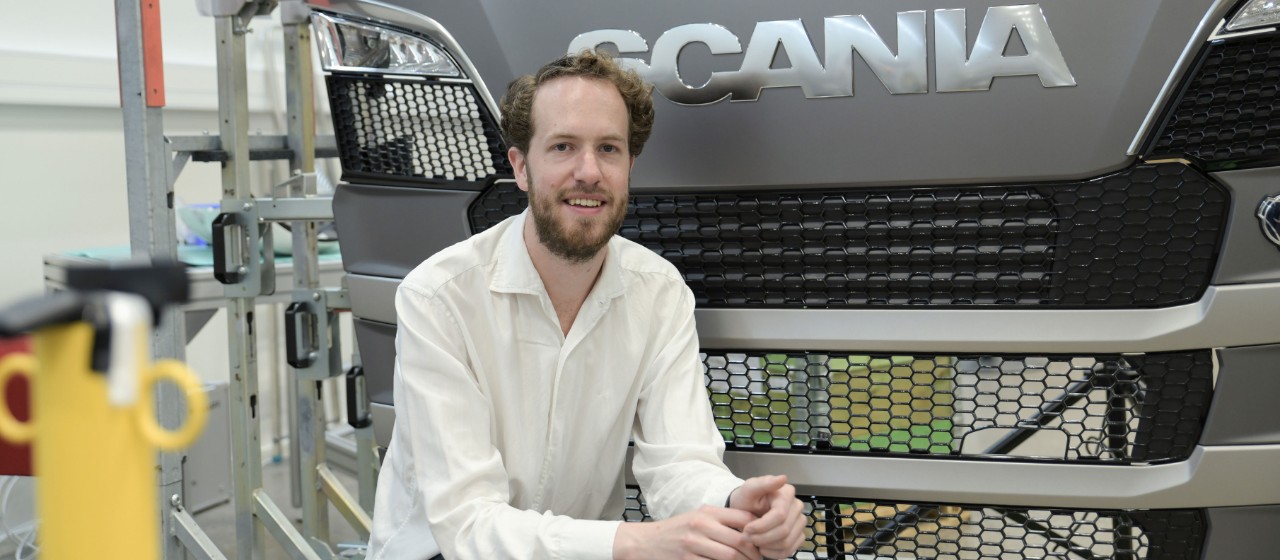
Scania pilots Computer Vision technology
27 AUGUST 2020
Everyone makes mistakes. What is unforgivable is if these are not caught before reaching customers. That is why Scania has quality assurance checks in place at every stage in production. The drawback is that rectifying mistakes is costly. By making use of Computer Vision, Scania is now piloting the technology at its production units in the Netherlands.
“The problem is that most often we discover mistakes when assembly has already been completed. And correcting them incurs costs,” says Eddy Bakker. Senior Product Engineer at Scania Production Meppel. “Now these can be corrected at the source.”
The hardware is seemingly simple whereby a web camera picks up images of the – in this case – the front hatch being produced. According to specification, some should be mounted with a closed mesh, others open. And lamps may also differ. The image registered by the camera is instantly transferred to a computer that will determine whether the assembled product matches the required specification. If not, the product will be red flagged for remedial action.
Camera detects deviations
The introduction of Computer Vision is being coordinated throughout the Volkswagen Group as this technology offers benefits in nearly all facets of auto manufacturing. “There are currently some 300 Computer Vision projects within the Volkswagen Group, of which around 20 at Scania,” explains Jim Tolman, Innovation Engineer at Scania’s Smart Factory Lab.
Smart Factory Lab is an in-house incubator that tests and trials new technologies that can enhance production efficiency. Computer Vision is undoubtedly one of these with almost countless applications, also unexpected. Among those presently being developed is ensuring that the model badge is correctly placed and corresponds to the actual model and that the right sticker is placed on air tanks.
Looking further, Computer Vision could enable fork lifts to ‘see’ around corners for improved safety. Or finding stray wooden packaging pallets by scanning production areas, a hugely time-consuming and costly exercise at present. Or ensuring that the correct and right number of components are picked in the logistics warehouse for distribution to assembly.
Securing ethic and data protection regulations
The breakthrough has been the software developed by the Smart Production Lab in Wolfsburg that filters out by blurring humans while filming, thereby complying with ethics and data protection regulations. The camera itself registers anonymised data, which is not transmitted further or stored. In order words, an operator will never risk being reproached for a simple mistake, or worse, a misdeed in production.
“Now that we have the identity shield we’re currently sorting through business cases with candidates that can be implemented,” says Neil Coghlan, Scania IT. “We need to make sure that we capture nuances. There may be things in assembly that we’re not aware of and don’t see while others are more obvious. The computer needs to know.”